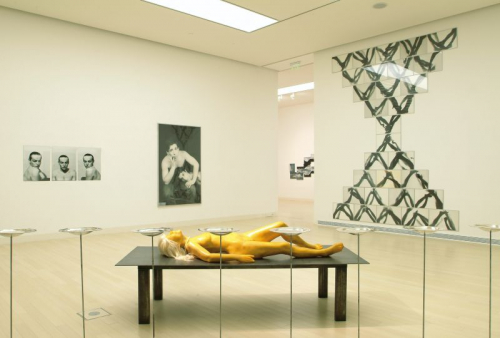In his third creative period, starting around 1990, the artist abandoned historical references and groups of characters dressed in archaizing costumes and arranged in theatrical tableaux. The process of gradual simplification began with the four-part Diary series. The “subject” itself also became narrower; the whole body was replaced by arms and legs, elbows and feet, the contours of emaciated limbs that seem all but amputated in their detachment from the body, replicated with minor changes and layered one upon the other. The worn light-bodies, the body parts that resemble X-ray images, the impressions burnt into the paper, were all made with a new technical solution: instead of placing negatives one on top of the other, the different elements of the image were photographed on the same negative, and the final composition was created with the juxtaposition of these small, framed photographs, which were placed under a sheet of glass. As a form, the diary – and in it, the drawing hand, which refers to the act of Creation – is an attempt to stop and segment time in the face of passing time and death. GÉMES made various series of the smaller self-contained images; Seven is to be read linearly, Net has reminiscences of Christ, while Hour Glass symbolizes unstoppable time. These works are sublimated impressions of the final reckoning and the acceptance of death.
D. K.


